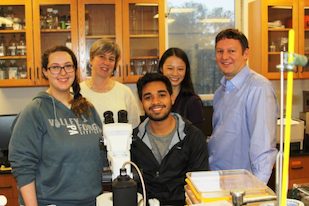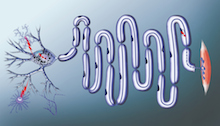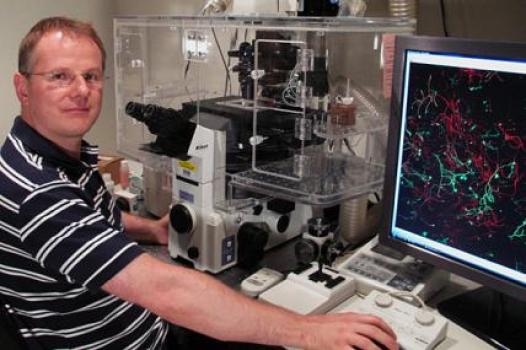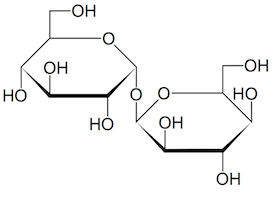Research in mice shows that a pharmacological strategy can alleviate multiple behavioral and cellular deficiencies in a mouse model of fragile X syndrome (FXS), the most common inherited form of intellectual disability and a major single-gene cause of autism spectrum disorders.
The results were published online last week by Neuropsychopharmacology, and were presented at the NFXF International Fragile X Conference in Cincinnati.
When the compound GSK6A was given to mice lacking the Fmr1 gene, an established animal model of fragile X syndrome, it relieved symptomatic behaviors, such as impaired social interactions and inflexible decision making, which can be displayed by humans with fragile X syndrome.
The findings indicate that treatment with GSK6A or a similar compound could be a viable strategy for addressing cognitive and behavioral problems in fragile X syndrome; this would need to be tested directly in clinical trials. GSK6A inhibits one particular form of a cellular signaling enzyme: the p110β form of PI3 (phosphoinositide-3) kinase. A closely related p110β inhibitor is already in clinical trials for cancer.
Video from the iBook “Basic Science Breakthroughs: Fragile X Syndrome”. Narration by Emory genetics chair Stephen Warren, whose team identified the gene responsible for fragile X.
“Our results suggest that p110β inhibitors can be repurposed for fragile X syndrome, and they have implications for other subtypes of autism spectrum disorders that are characterized by similar alterations of this pathway,” says Gary Bassell, PhD, professor and chair of cell biology at Emory University School of Medicine.
“Right now, no proven efficient treatments are available for fragile X syndrome that are targeted to the disease mechanism,” says Christina Gross, PhD, from Cincinnati Children’s. “We think that p110β is an appropriate target because it is directly regulated by FMRP, and it is overactivated in both mouse models and patient cell lines.”
The paper represents a collaboration between three laboratories: two at Emory led by Bassell and Shannon Gourley, PhD, and one at Cincinnati Children’s, led by Gross. Gourley is based at Yerkes National Primate Research Center; see this earlier item on her collaboration with Bassell here.
While the researchers are discussing clinical trials of p110β inhibitors in fragile X syndrome, they say that long-term studies in animals are needed to ensure that undesirable side effects do not appear. More here.
With respect to clinical trials, the fragile X community has been disappointed before. Based on encouraging studies in mouse models, drugs targeting mGluR5 glutamate receptors were tested in adolescents and adults. mGluR5 drugs did not show clear benefits; recent re-evaluation suggests the choice of outcome measures, the ages of study participants and drug tolerance may have played a role.
Warren played a major role in developing the mGluR5 approach and Emory investigators were part of those studies. More recently, clinical trials for one of the mGluR5 medications were revived in younger children and Emory is a participating site. Also, see this 2016 discussion in Spectrum with Elizabeth Berry-Kravis on the fragile X mouse model; Bassell, Gross and Gourley have made some inroads on the limitations Berry-Kravis describes.















